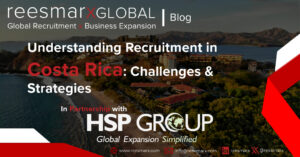When businesses were forecasting growth for 2020, no one could predict the economic impact of a global pandemic. At the beginning of 2020, concerns quickly escalated to measures for public safety. That created new hurdles for businesses. Particularly companies that had service-oriented, retail, or public-facing models. When it became clear that consumers were changing the way they purchased goods and services, businesses began to see a deceleration in spending. To be clear, some sectors such as FinTech and remote SaaS providers like Zoom, and Microsoft Team saw increased sales. The ‘new normal’ of remote work had a tremendous growth impact on some niche sectors.
But for many businesses, the Covid-19 health emergency meant contraction. Depending on the impact on overall revenues, businesses began to reduce costs to remain agile in the face of the new threat and adversities. Part of the cost-cutting measures for many businesses was to dismiss, lay-off, or furlough employees. The pandemic has created a rapid shift in the way companies do business. And how human capital is managed. Cutting expenses and downsizing wherever possible became the new playbook for businesses. As they started to navigate the first global pandemic since 1918, whole economies worldwide were had to evolve. And quickly.
As unemployment rates rose, so did a sentiment of uncertainty for professionals. If they had been considering a new opportunity, they may be reticent to make a change now. And that lack of confidence in the labor market has created recruitment and retention problems.
It May Be Easier to Recruit Top Level Candidates During an Uncertain Labor Market
Now that businesses around the world have adjusted to the effect of the pandemic, many are hiring back employees. Many companies are proceeding with hires and departmental expansions that they planned for 2020. The loss of employees or downsizing of critical departments can save businesses money. But what many midlevel to enterprise organizations are realizing, is that the cost-cutting measures have both risks and rewards. Some technology companies for instance have used the economic insecurity to recruit top-level talent. From small or medium-sized businesses.
Candidates who are willing to make a move right now during an uncertain job market, are leaning toward larger corporations. Companies that may have more resources to weather the pandemic without the need to furlough employees. There is a perception of more
job security with a large organization. While that may not always be true, it is a sentiment shared by many professionals. For corporations, and multinationals, this bodes well for recruitment potential. Candidates that your business may not have discovered in a more favorable economy are searching for security. And they bring with them the talent and experience that can help your business rebound and recover.
Many of our clients are looking ahead to that recovery curve expected in 2021. With recent announcements regarding pharmaceutical developments, recovery may occur sooner in 2021 than expected. Now is the time to project your talent needs and develop a hiring strategy that will have your business poised for growth by Q2. Will you be ready?
Read: “Creating a Growth Plan for a Post-Pandemic Global Business Climate”.
A Reduction in Workforce Can Mean Costly Inefficiencies and Lost Productivity
Accountants are skilled at crunching the numbers and saving money. On paper, a reduction of employees shows substantial savings. In terms of monthly expenditures. And furloughing employees may have been one of the most critical defensive strategies businesses used to stay afloat. Through the economic contraction caused by the 2020 Covid-19 health emergency.
But a loss in skills and experience can be detrimental to growth. Daily productivity is quickly impacted by a skeleton crew staffing strategy. Not only are there not enough ‘hands on deck’ but the employees that are remaining on your team can burn out. Quickly. An otherwise healthy work environment can become toxic when employees feel overwhelmed. And given other stressors including economic and health concerns, even the most financially stable company can experience attrition of talent.
The option to furlough employees has helped businesses. Is it time to call those employees back? Are you finding that some of your most talented and experienced employees are not eager to return to the office? The health risks still present a legitimate fear. And depending on the country or region, pandemic financial supplements for unemployed or furloughed employees may allow those that are most concerned or at risk to stay at home. Until the pandemic is over.
Lost productivity. Difficulty engaging furloughed employees to return to work. And the hesitancies of many skilled professionals to make a change.It adds up to problems with recruitments that many businesses are experiencing right now.
What Are the Four Effective Strategies Professional Recruiters Are Using Right Now?
If you have evaluated your talent needs for the coming year, now is the time to start interviewing. Social distancing protocols recommend video teleconference (like Zoom) interviews. While convenient, they can be time-consuming. As we assist our global clients with resourcing, our recruiters are using candidate focused strategies to present the most qualified candidates. Here are some of the strategies our team at reesmarx is currently using to get results:
1. Keep the Candidate Engaged Throughout the Interview Process
Interviews can take four weeks or longer, depending on the number of staff you plan to recruit. One of the big mistakes that businesses can make, is waiting to engage a top tier candidate. For instance, if the candidate scored well on pre-assessments and in the first preliminary interview, your team may wait until you have interviewed twenty or more candidates.
What happens in that scenario? The lack of response from the prospective employer convinces the candidate that they were not being considered for the role. They quickly move on to another opportunity. And if they are experienced, and talented, by the time you reach out several weeks later, the candidate has already accepted another opportunity.
Counteroffers are stressful. For both employers. And it is also agonizing for the candidate. Particularly if the counteroffer is from the existing employer. Then loyalty becomes a factor, and it is hard to compete with tenure.
Give all candidates “in the running” updates at least once a week. It may be a short-templated email that lets them know they are still a contender. And gives them more information about the interview process, assessment tests, and more.
2. Focus on Corporate Culture and Benefits to Create Interest
Hostility in the workplace? The stressors of the pandemic have an impact on daily life. And that includes our general mood and behavior in the workplace. If a positive working environment suddenly becomes toxic or unpleasant, the employer can expect the trifecta: loss of productivity, animosity, and loss of talent.
How highly is your company rated on Indeed.com? The reviews and rating system help prospective candidates evaluate the workplace culture. Positive employee reviews (past and present team members) can really boost recruitment efforts. If your business is perceived to be a “great place to work” with life-balance benefits.
3. Consider Increasing Your Compensation Package for Top Tier Candidates
Would you be surprised to learn that some of the largest companies in the world may be providing bonuses this year to employees? While businesses are hit hard by pandemic economics, the average household has been coping with uncertainty and possible financial adversity for months. When you have found the perfect fit and the innovative employee that you want to hire, be prepared to face counteroffers. And, if the candidate is highly competitive, be ready to compete for them. They are worth the time and cost of acquisition.
While some companies may be cutting back on content marketing and social media, it can have a detrimental impact on recruitment. Assumptions about the financial instability of the business are easy to make when you see online branding efforts reduced. Remember, before a candidate accepts an invitation to interview, they will have done a little research. Average salary data at your organization is available online. So are reviews of management, philanthropic activities, EAP, and more.
Your branding can help your business attract high caliber candidates. And it can also help you retain the talent you have on your team.






